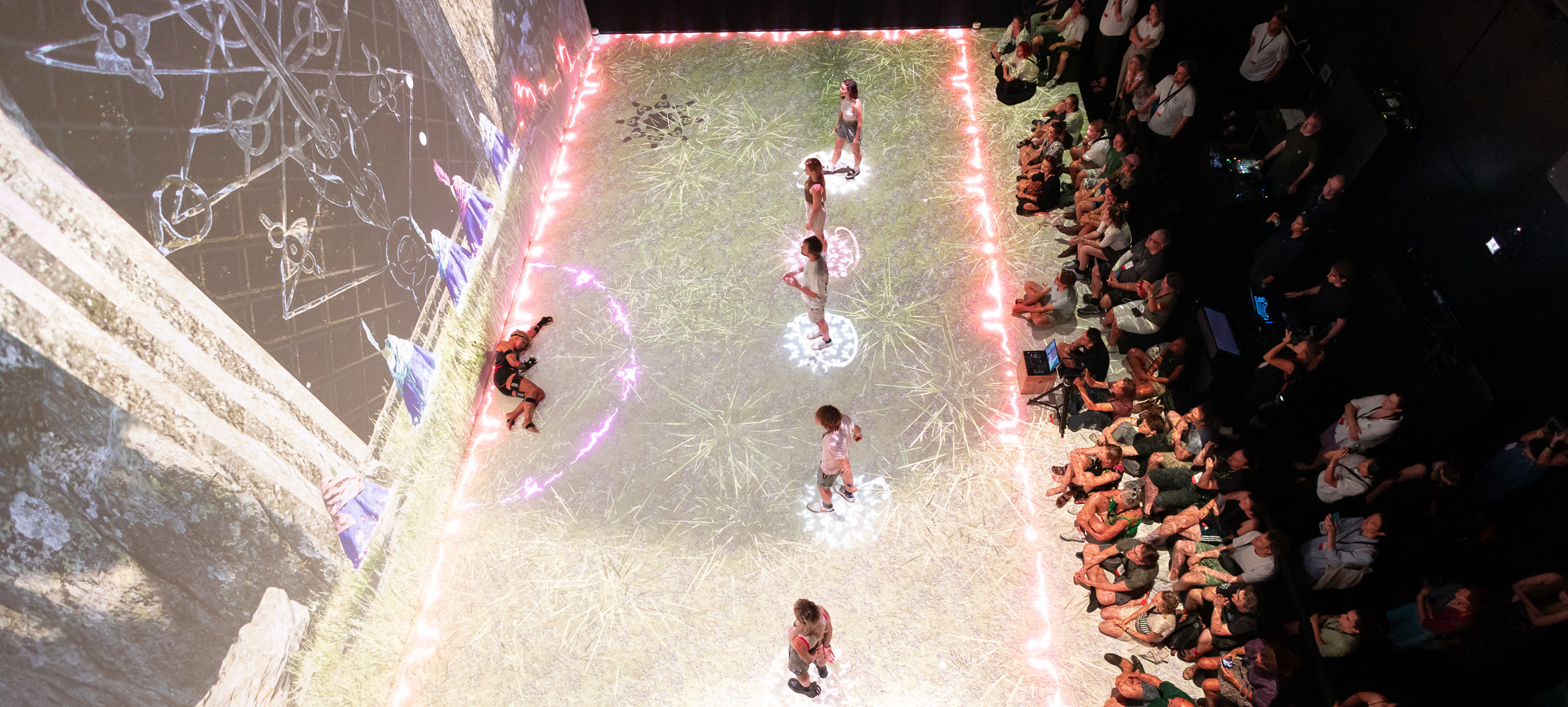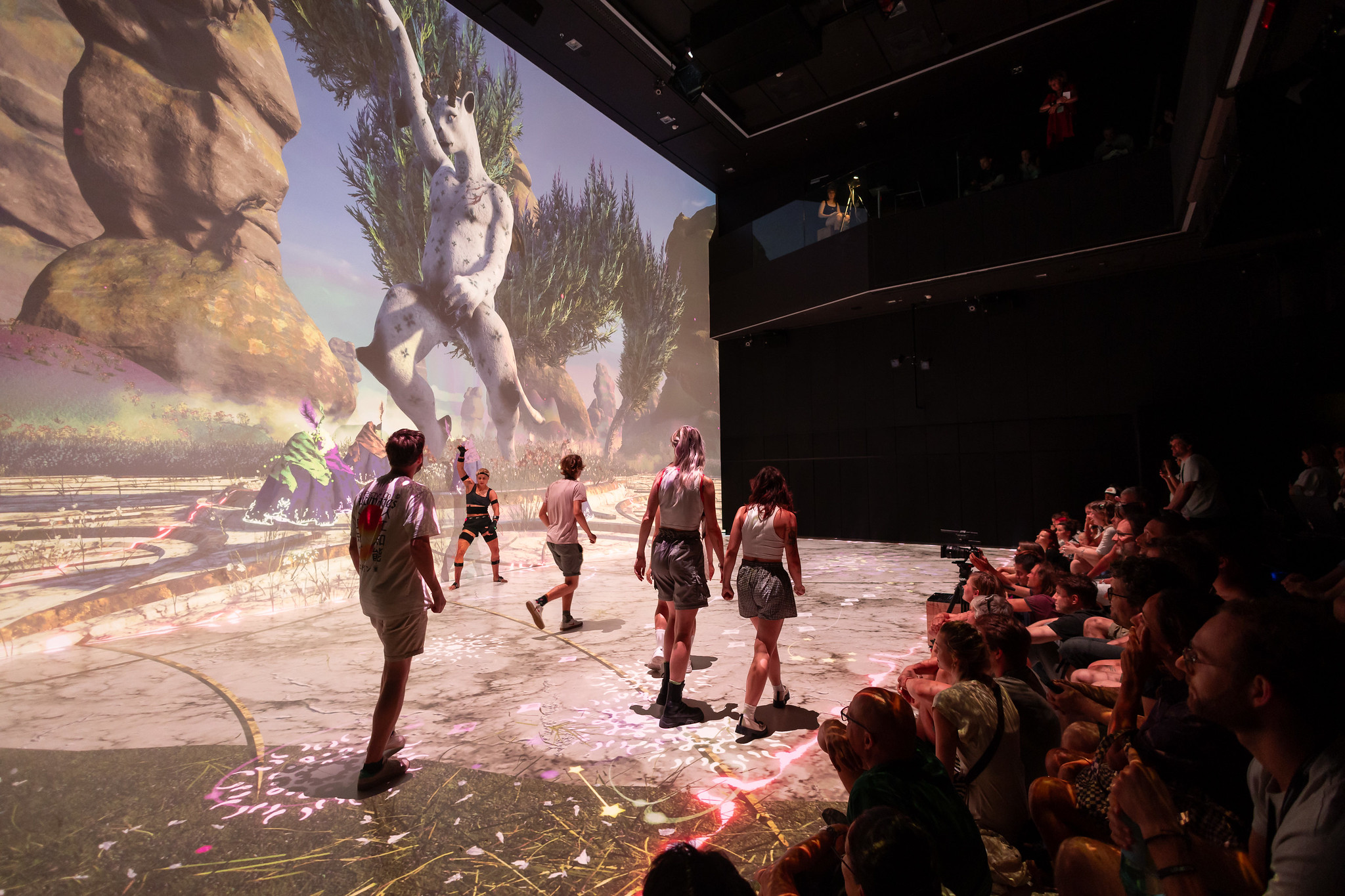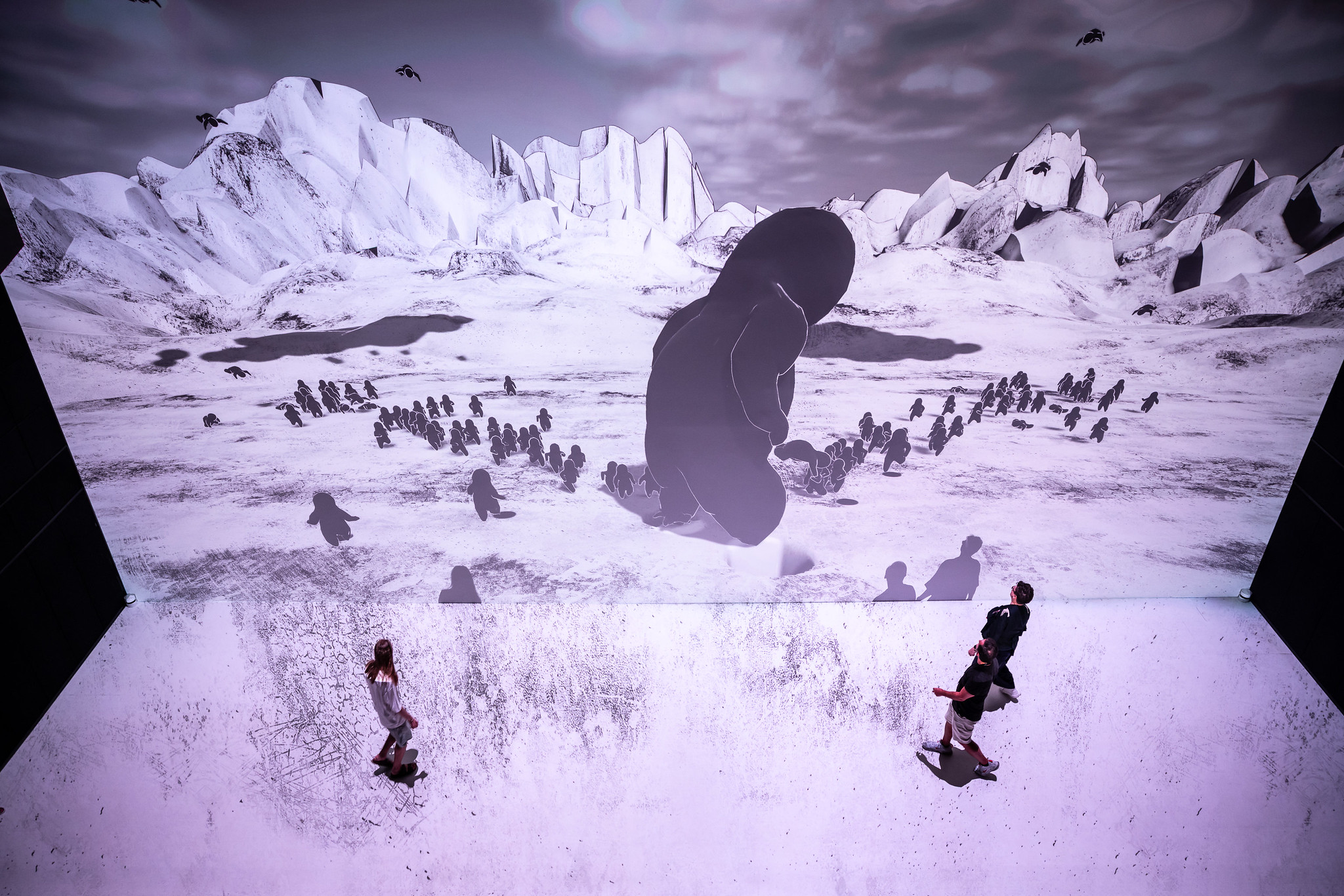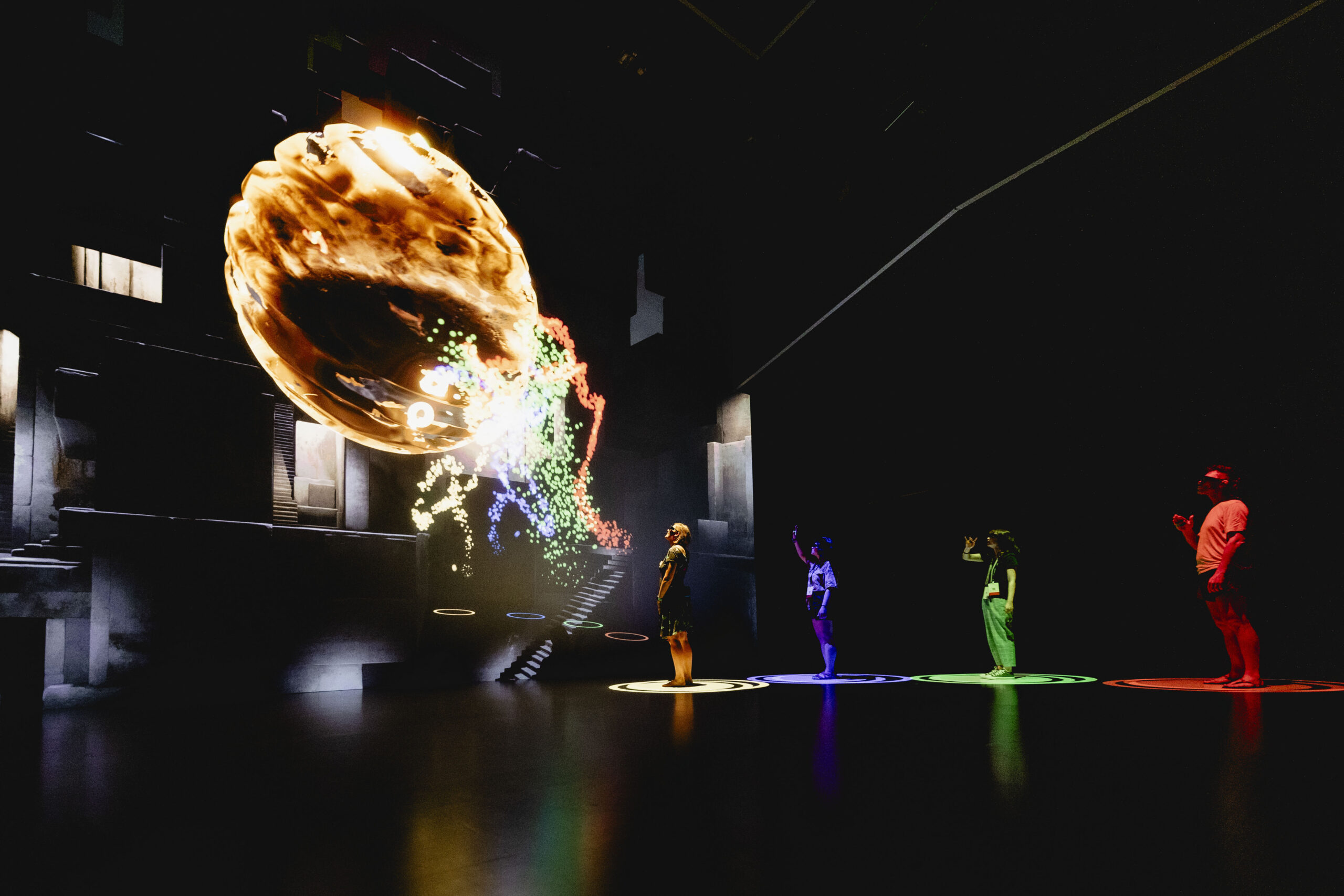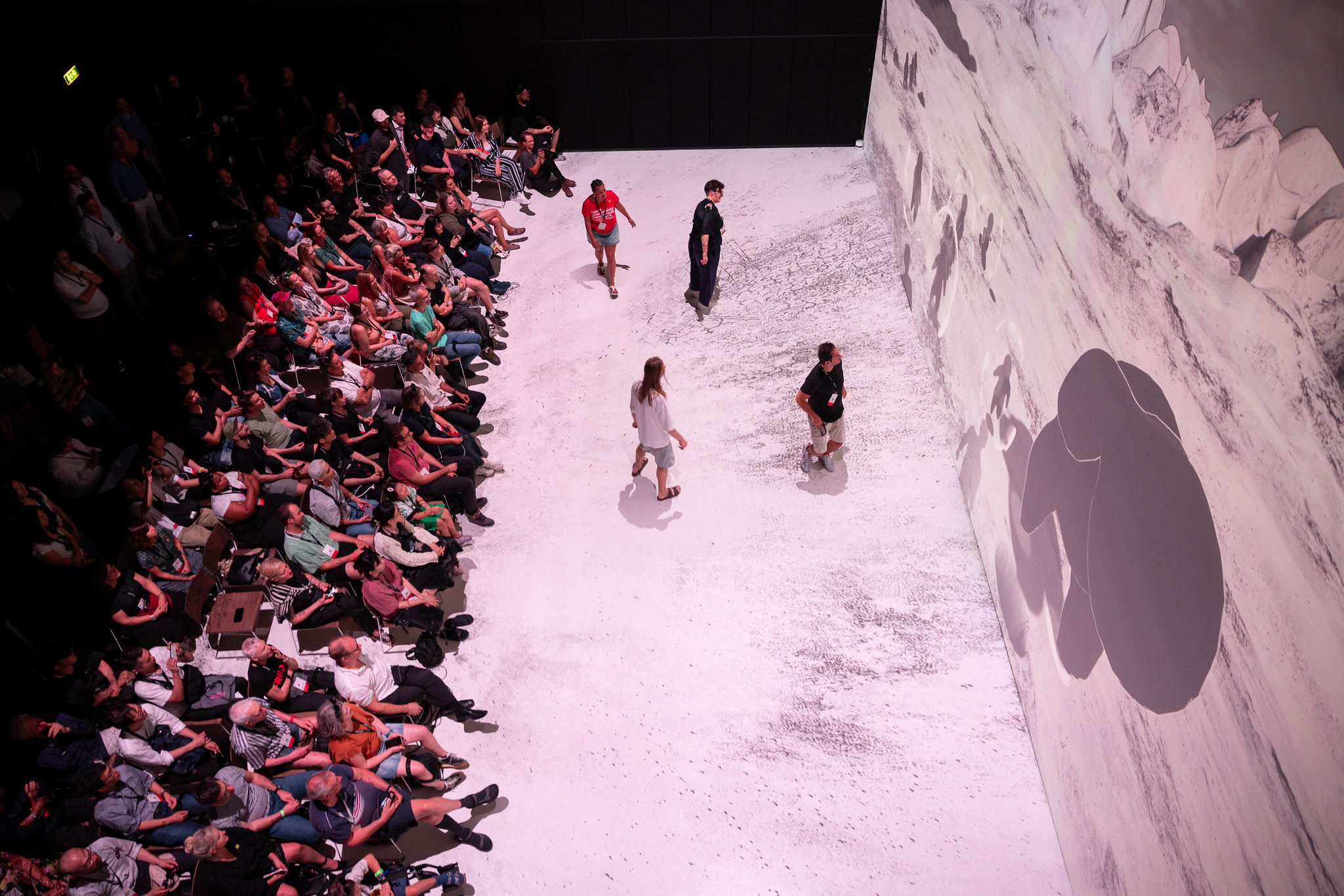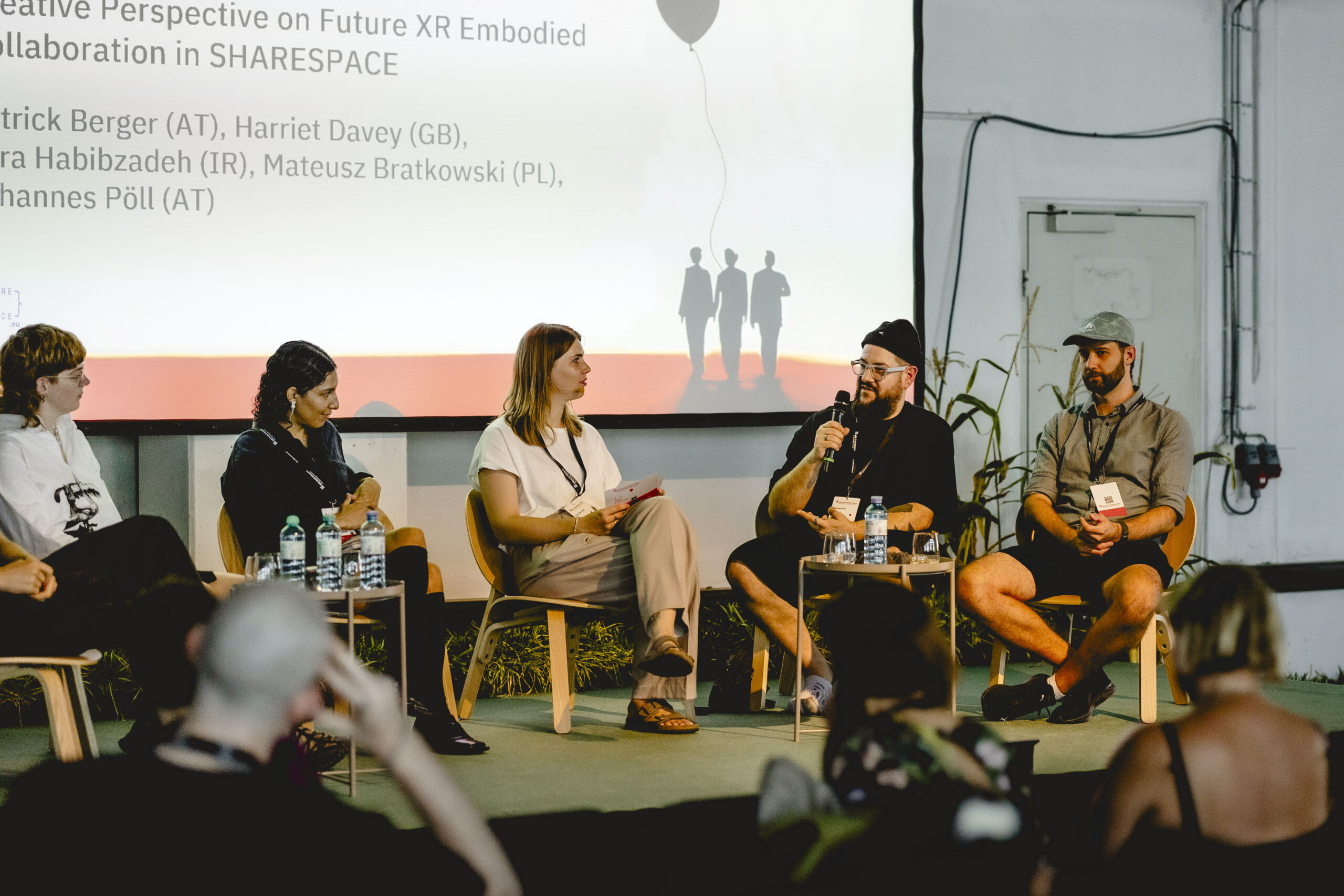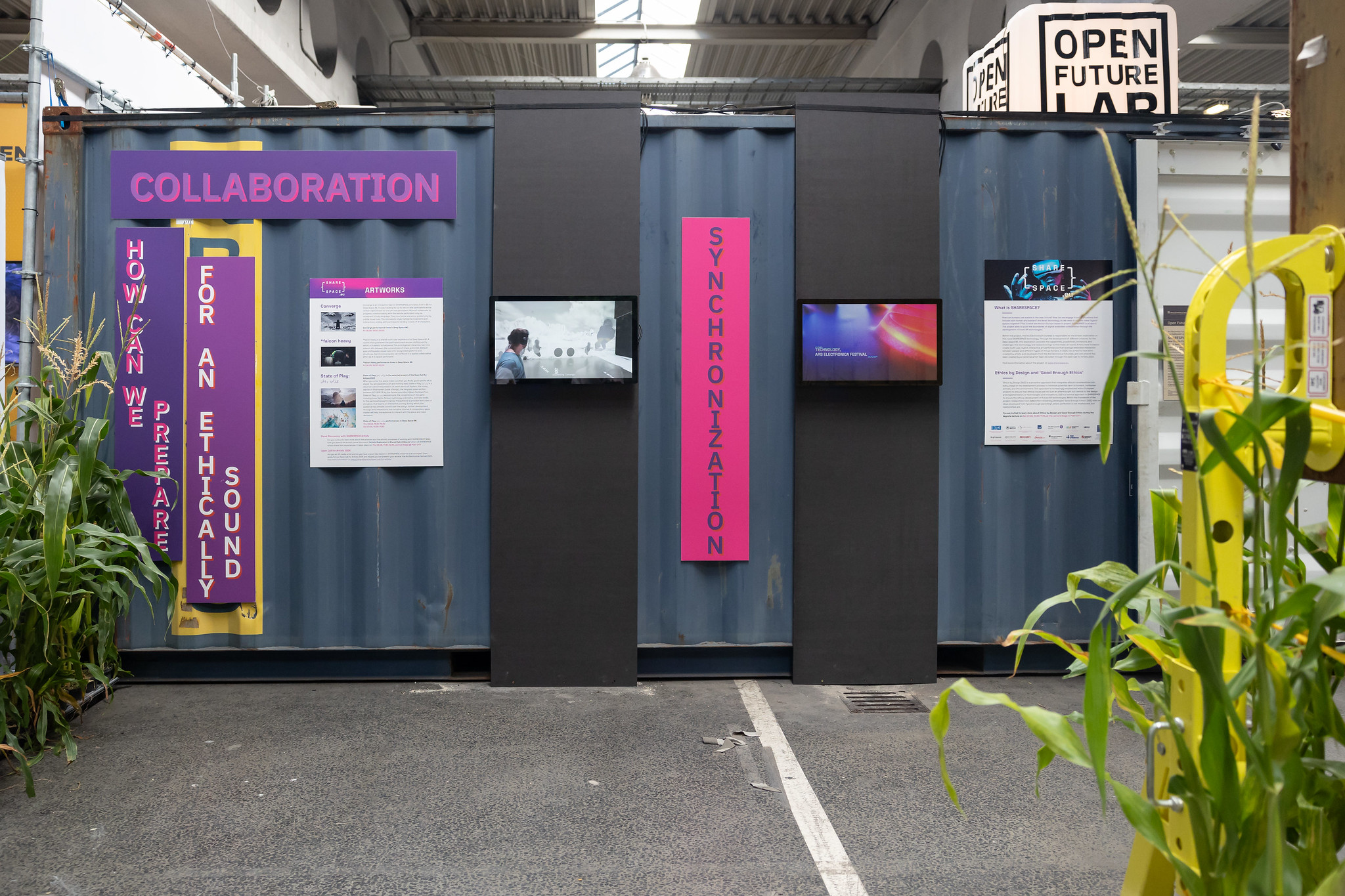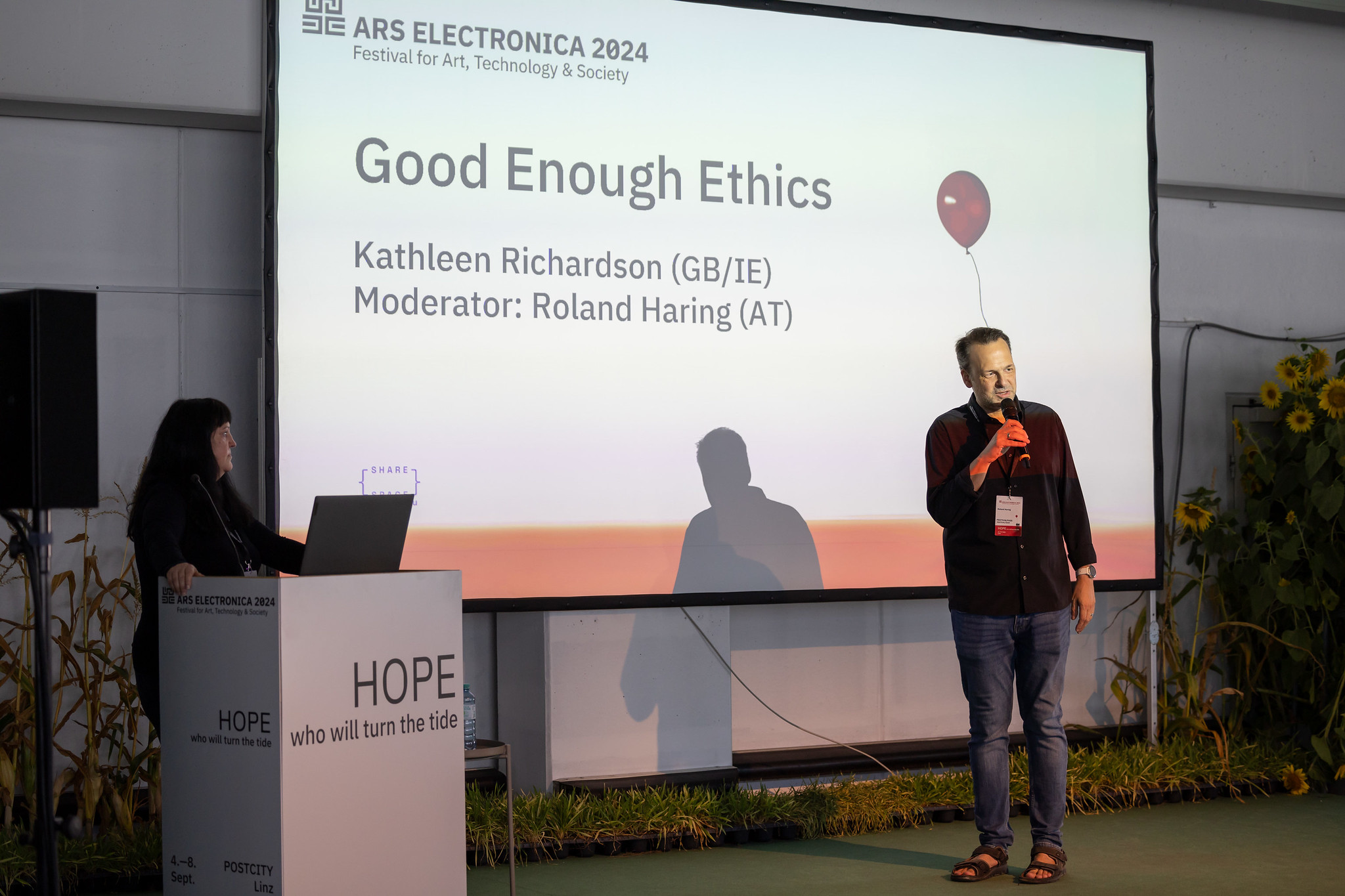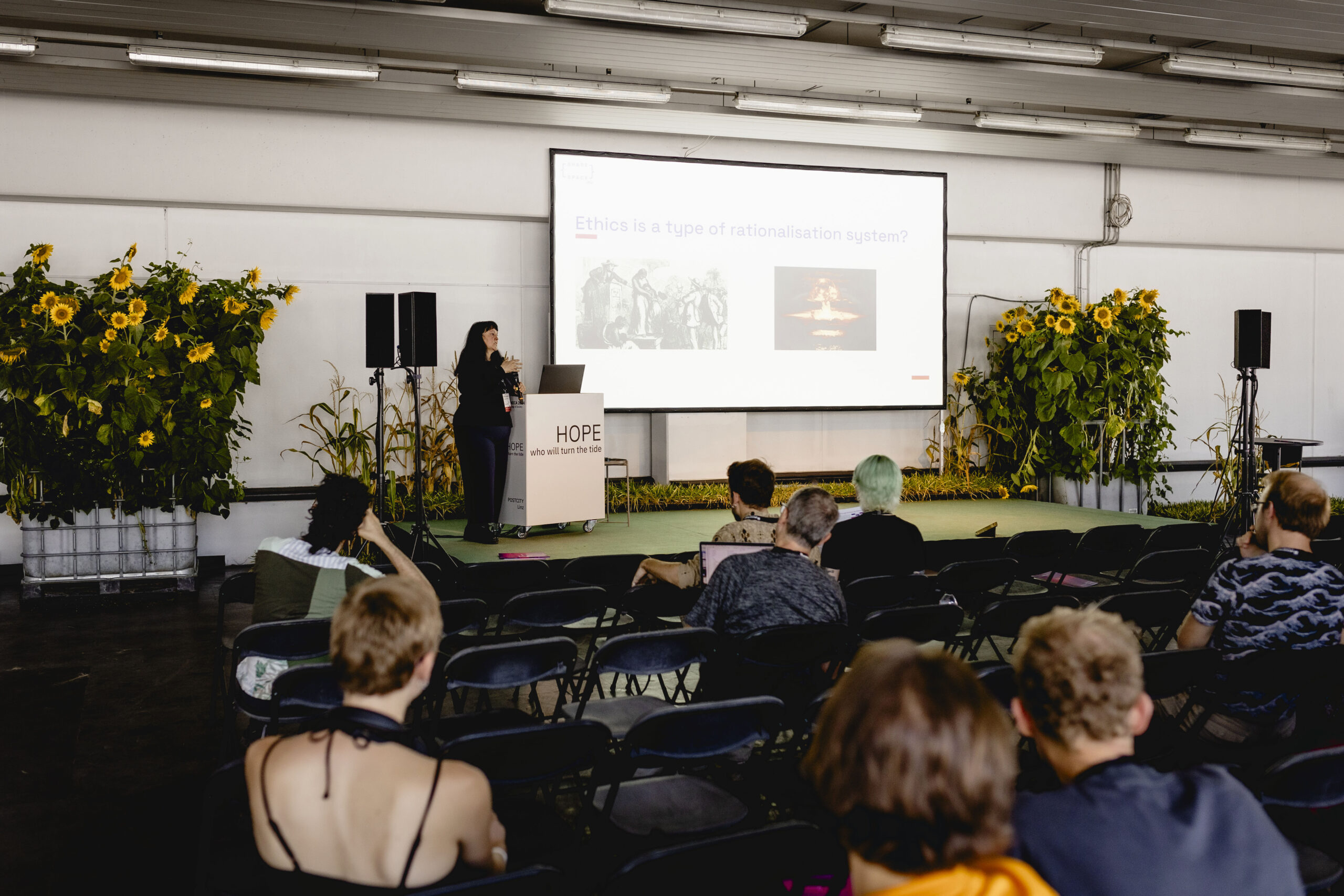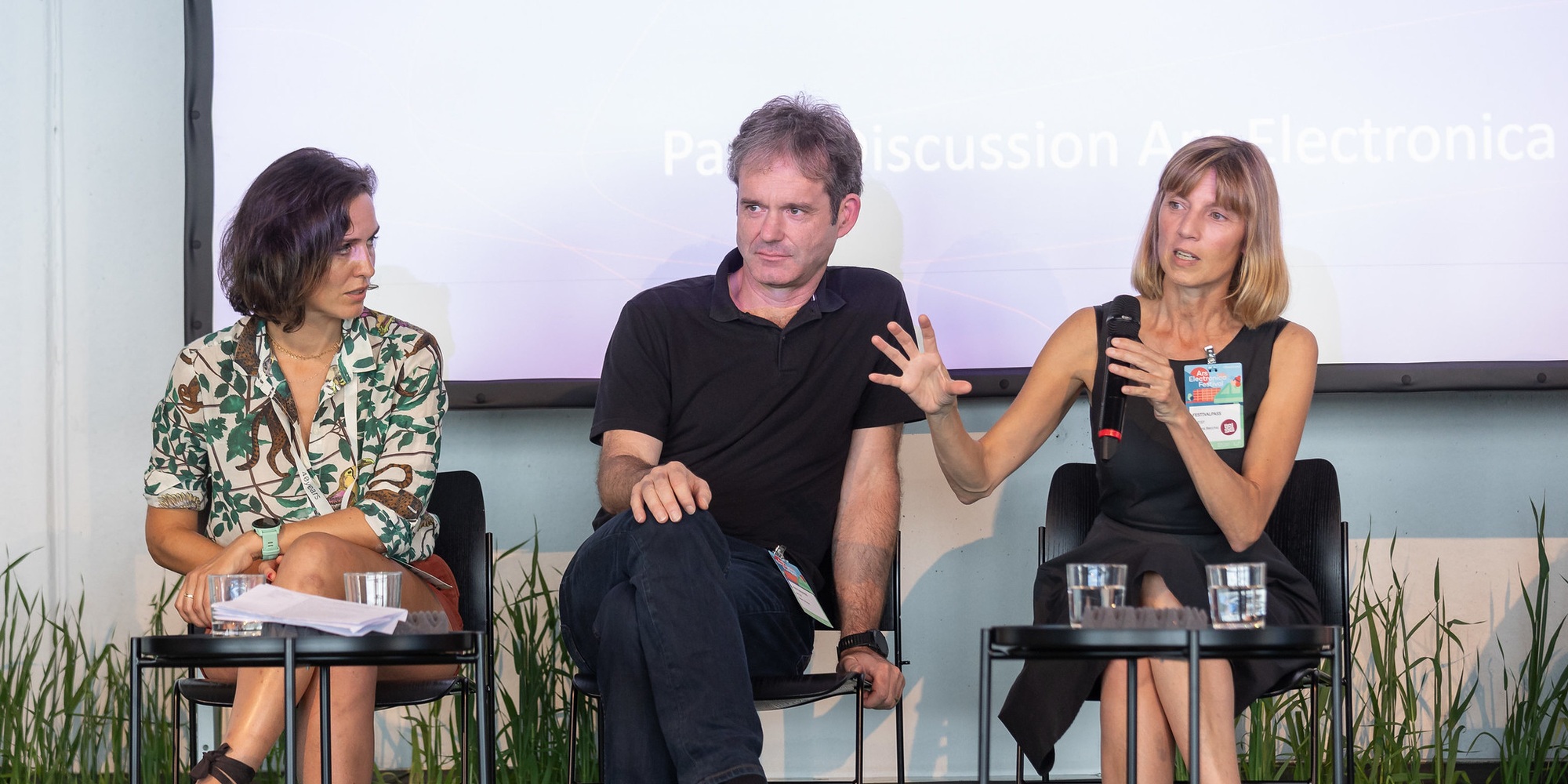How could humans use digital avatars in the near future? How can we engage in social situations that include both human and automated avatars? And what technology do we need to explore these ‘hybrid’ spaces together? This is the focus of the European R&D project SHARESPACE.
SHARESPACE is a European R&D consortium consisting of 14 partners, including the Ars Electronica Futurelab. The three-year long research project runs from January 2023 until December 2025. In 2025, two artworks developed for Deep Space 8K are showcased at the Ars Electronica Festival: one by researchers from the Futurelab, and one by a collaborating artist team invited through an open call.
The main goal of the project is to bring extended reality (XR) to a radically, ethically sound, new level of presence and sociality by furthering the possibilities of interaction in a virtual space using avatars. In total, two university hospitals, three universities, five research institutes, and four companies from eight different countries participate.
Shared Hybrid Spaces for humans and avatars
The backbone of the SHARESPACE project is the development of so-called Shared Hybrid Spaces (SHS). These are spaces that are shared by humans and avatars where both are engaged in embodied collaborative tasks. This is made possible by transparently capturing social sensorimotor primitives through mobile connected innovative sensors, and then reconstructing them using novel XR technology. During this research project the developed technology is applied in three real-world scenarios (sport, health & art) and presented during high-profile events such as the Olympic Games 2024 and the Ars Electronica Festival 2024 & 2025.
SHARESPACE and Art
The role of the Futurelab within the SHARESPACE project is to engage in an artistic exploration of the possibilities of the SHARESPACE technology. Through the creation of multiple artworks, the team aims to research what new additions this technology can make to the media arts. The Ars Electronica Festival serves as the backdrop for the real-world art scenario of the SHARESPACE project. Multiple artist have been working hard to create multi-user, hybrid, interactive art performances that leverage embodied interaction between people and different types of Virtual Humans.
SHARESPACE at the Ars Electronica Festival 2025
At this year’s Ars Electronica Festival, visitors can explore two artworks developed for Deep Space 8K within SHARESPACE:
Converge 2
Ars Electronica Futurelab: Friedrich Bachinger, Patrick Berger, Victor Petro, Johannes Pöll, Daniel Rammer, Raphael Schaumburg-Lippe, Cyntha Wieringa
This new multiplayer experience in Deep Space 8K by Futurelab Lead Designer & Artist Patrick Berger centers on collaborative puzzle solving. Converge 2 builds on the first version presented last year, with fresh ways to interact, using new tech from the SHARESPACE project. Up to eight local players and one remote player in a motion-capture suit can join in. Through verbal and physical communication, the piece explores how people can connect and work together in both real and virtual worlds.
Foolish Flame
Peter Power and Leon Butler
This transdisciplinary installation, developed by Irish artists Peter Power and Leon Butler, explores climate change and inherited trauma, where visitors become avatars in a shifting digital landscape shaped by collective memory. Through real-time interaction and a responsive environment, the experience explores our impact on nature and each other. Overlooked by an ethereal “Foolish Flame”, the space pulses with an original score on Uilleann pipes, electronics, and voice, bridging myth, movement, and environmental reckoning.
SHARESPACE at the Ars Electronica Festival 2024
Between 2023 and 2024, three Deep Space artworks were developed – two by researchers and developers at the Ars Electronica Futurelab, and one by a selected artist team through the SHARESPACE Open Call for Artists 2023. Converge, *falcon heavy und State of Play:شهر بازی were presented in the Deep Space 8K during the festival happening from 4th to 8th September 2024.
Converge, conceptualized by Patrick Berger (Ars Electronica Futurelab), is an exploratory piece where decentralized interaction and collaboration between humans and avatars plays a central role.
*falcon heavy, conceptualized by Johannes Pöll (Ars Electronica Futurelab), is an audiovisual application where synchronizing with others is key for the ultimate collective experience.
State of Play: شهربازی, created by artists Tara Habibzadeh, Harriet Davey, and Mati Bratkowski is an interpretation of the Last Labour of Rostam’s 7 Labours in “Shahnameh” as a deconstructed video game boss fight.
All artists involved in the project were engaged in an artistic panel discussion to discuss their concepts, processes, and what SHARESPACE concepts inspired them for their conceptualization. Furthermore, SHARESPACE partner DeMontfort University presented their policy plan ‘Ethics By Design: A Roadmap to Good Enough Ethics’ in a keynote lecture during the Festival.
This project was part of the Open Futurelab at the Ars Electronica Festival 2024.
Credits
Ars Electronica Futurelab: Roland Haring, Anna Kuthan, Ali Nikrang, Daniel Rammer, Cyntha Wieringa
PARTNER: German Research Centre for Artificial Intelligence (DFKI); Alcatel-Lucent Enterprise; CRdC Nuove Tecnologie per le Attività Produttive Scarl; Cyens Center of Excellence; Golaem S.A.; Hospital Vall d’Hebron; Institut national de recherche en sciences et technologies du numérique; Lightspace Technologies SIA; Ricoh Europe; Universitat Jaume I De Castellon; University Medical Center Hamburg-Eppendorf (UKE); University of Montpellier; De Montfort University
This project has received funding from the European Union’s Horizon Europe research and innovation programme under grant agreement No 10192889.
